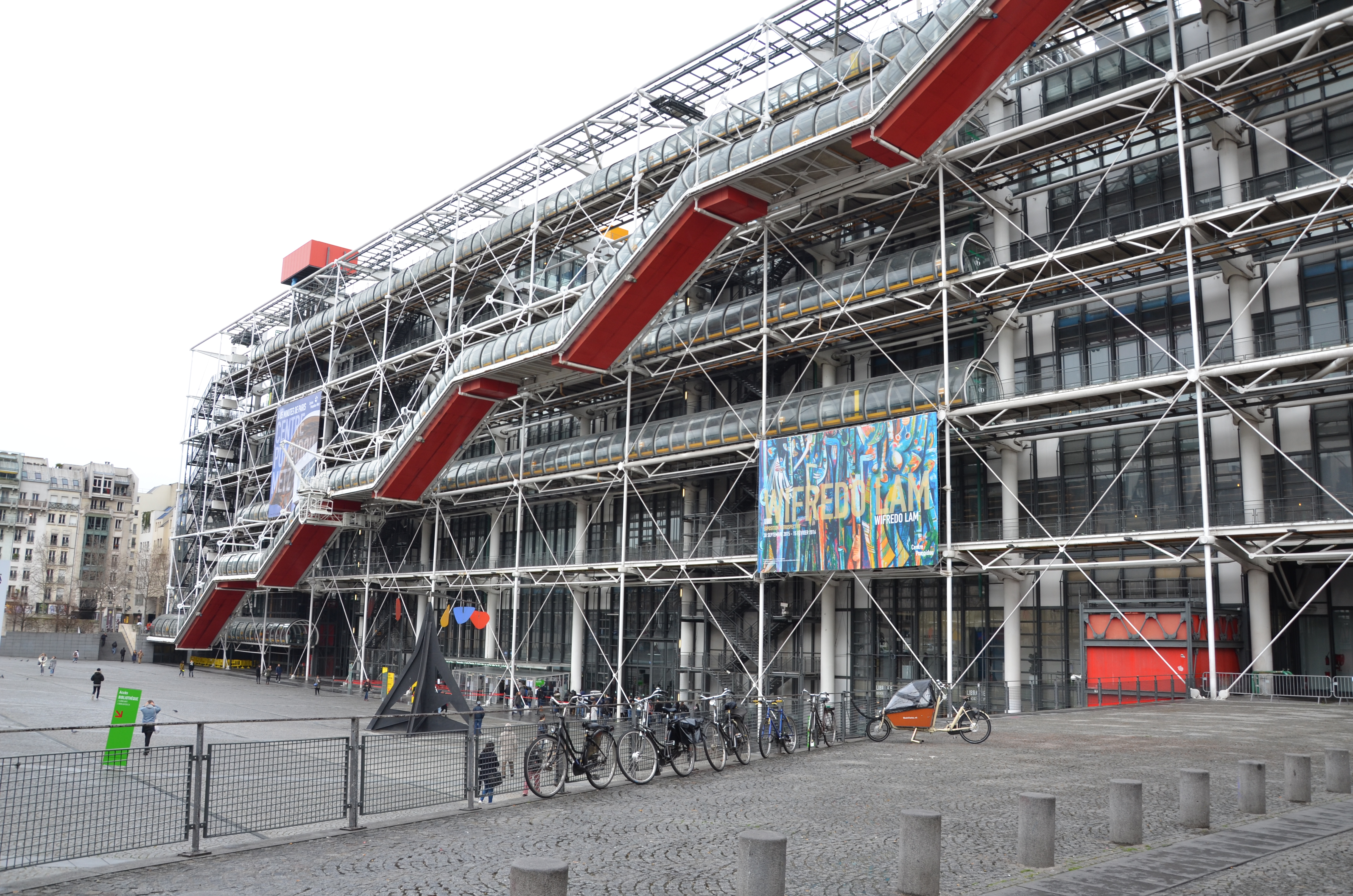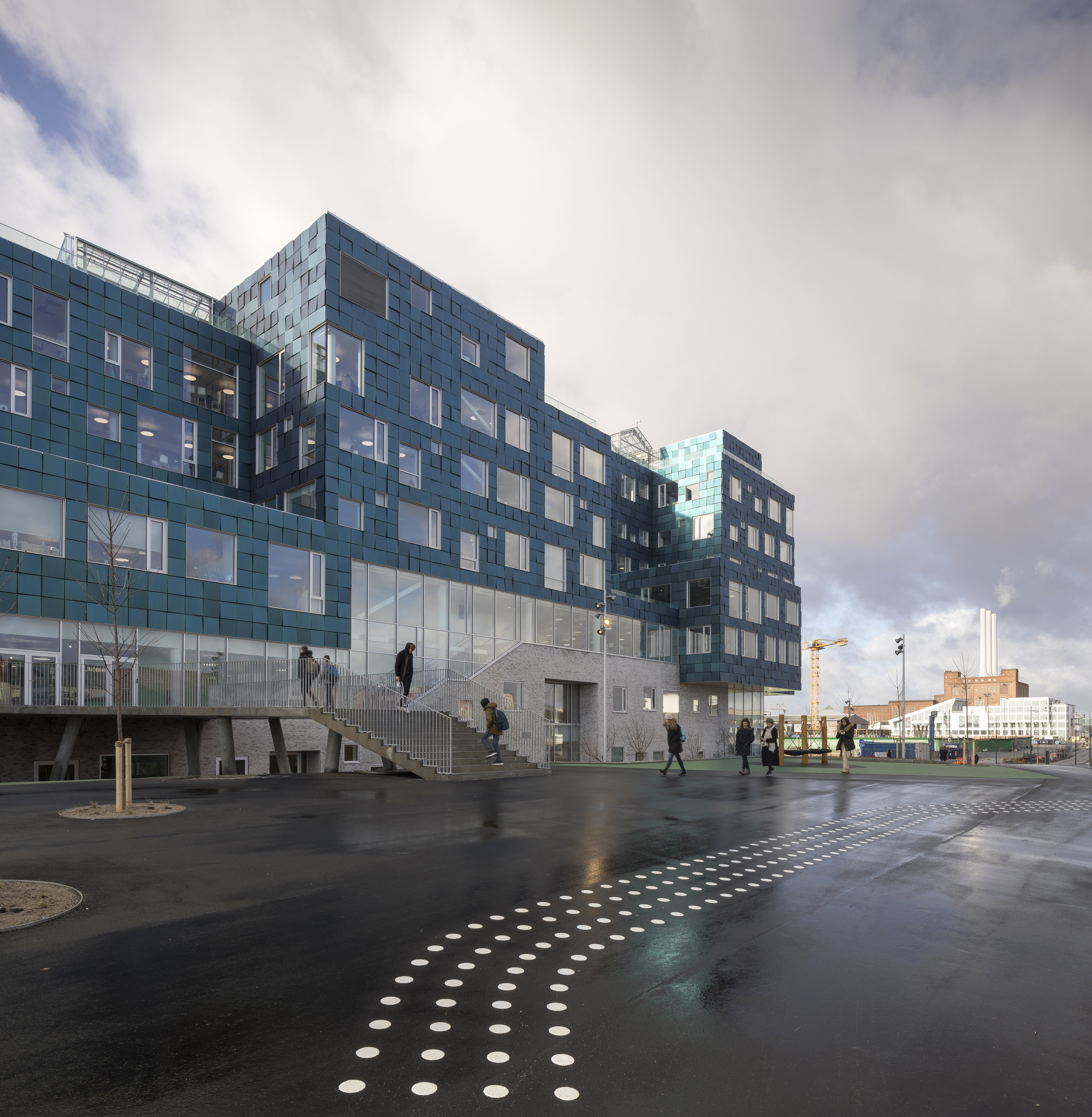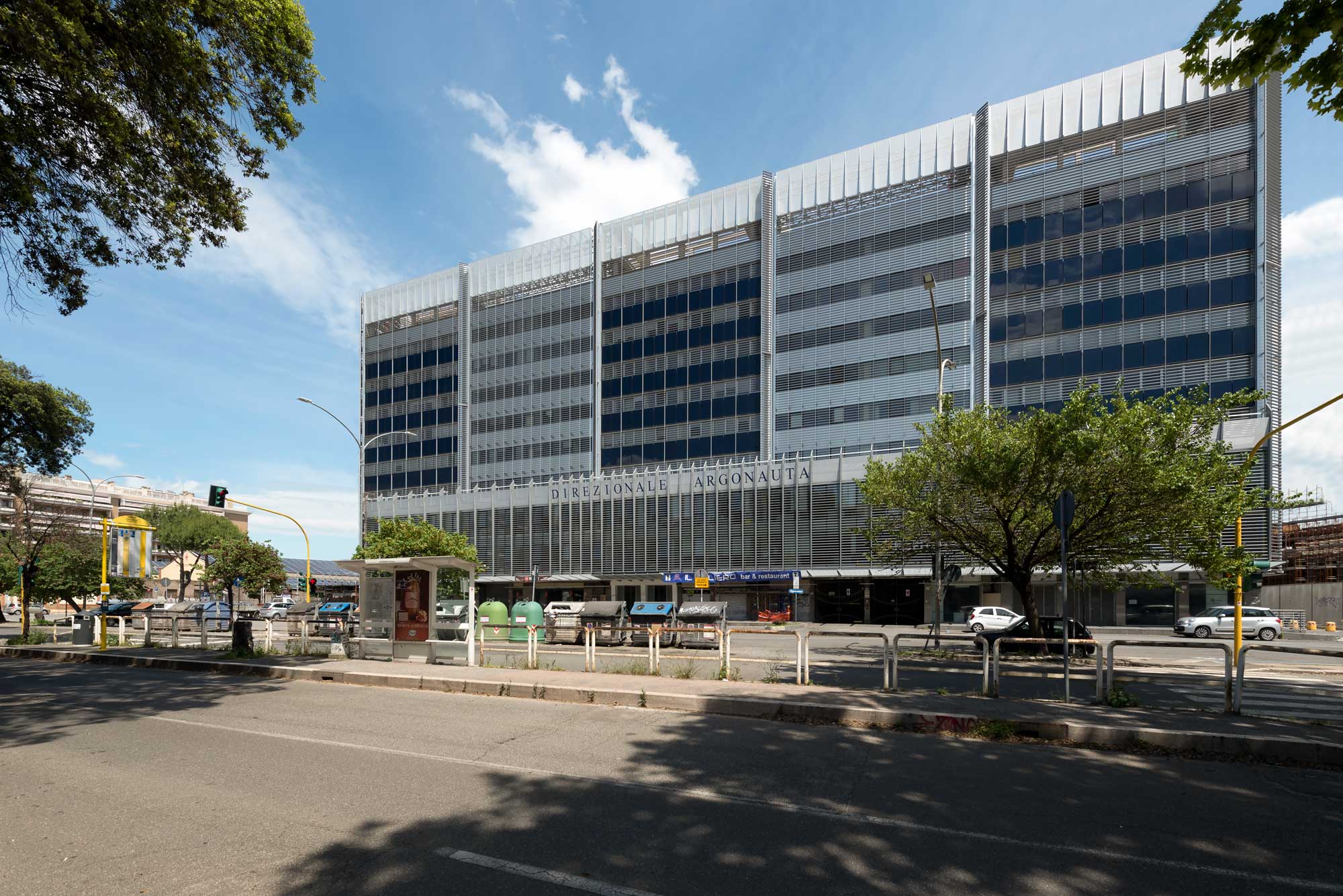The beginning of the revolution has a date: 31 January 1977, the day of the inauguration of the Georges Pompidou National Centre of Art and Culture in Paris. For the first time, installations are the protagonists of architecture: a tangle of pipes, channels, valves and fittings embraces the volume of the building, designed by Renzo Piano, Richard Rogers and Gianfranco Franchini.

The main façades of the Georges Pompidou Centre, standing on the square of the same name and characterised by the vertical path of its escalators.
© Photo: Nora Santonastaso / design outfit
When we talk about the relationship between installations and architecture, the question most often shifts to a specific level which involves the realisation of a particular goal: concealing as far as possible every element of pure technological value, using solutions capable of minimising the aesthetic impact of the electrical, water and any other installation, connected with the use of a building.
In magazines and websites in the design and architecture sector, the space dedicated to products capable of satisfying this demand is large, and it is very often in the field of plant engineering that design proposes avant-garde solutions with minimal aesthetics and high technological performance.
In 1977, however, this trend suffered a violent setback. The new Georges Pompidou Centre in Paris, designed by Renzo Piano, Richard Rogers and Gianfranco Franchini, told a story of perfect integration between architecture and plant engineering networks. The latter, far from being hidden in dedicated compartments and cavities, literally invaded the façades of the building, wrapping it in a sort of colourful and well-organised tangle : yellow pipes for electricity, red for lifts and escalators, green for water and blue for air.
The functioning of the building was in short declared without aesthetic qualms, implicitly associating the concept of architecture with that of a machine with high technological performance. If you have visited the Centre, you are likely to remember vividly the experience of walking down the network of escalators on the main façade that leads from the street level up to the rooftop, offering a unique panoramic view of the city on each floor.

The new headquarters of the Copenhagen International School built between 2013 and 2017 to a design by the Danish firm C.F. Møller Architects and featuring façades entirely clad in photovoltaic panels.
© Photo: Adam Mørk via cfmoller.com
From 1977, we take a leap in time of a good 36 years and fly from Paris to Copenhagen. Here, in the district of Nordhavn, a building with façades entirely coated with photovoltaic panels brings the integration of architecture and technological-systems to a sophisticated and modern aesthetic level, encouraging the building's dialogue with its surroundings and, in particular, with the reflective mirror of the surrounding sea.
Each of the 12,000 solar panels, which were initially intended to be much fewer in number and occupy only the surface of the roof, follows a specific angle to ensure the maximisation of green energy production and, at the same time, defines a harmonious façade design, characterised by a recurring three-dimensional geometric pattern.
The area covered by the panels is 6,048 square metres and manages to cover more than half of the electricity needs of the school, which accommodates around 1,500 students, teachers and other personnel.

The redevelopment of Palazzo Argonauta in Rome's Via Ostiense uses the grid of the photovoltaic system to unify the aesthetics of the existing façade.
© Photo: Moreno Maggi
In Rome at 131 Via Ostiense, in the heart of one of the neighbourhoods undergoing the most marked urban evolution and transformation, the Argonauta Management Centre built in the 1970s to a design by engineer Renato Armellini transforms the need for functional and technological implementation into an aesthetic opportunity redeveloping the imposing façades which were previously fragmented into a discontinuous, incoherent and dilapidated whole that represented a reflection of a similar disorganisation of the interior spaces.
The restyling project by the Agenzia di Architettura studio led by architect Isabelle Magda Rizk uses the new photovoltaic system as a pattern to redesign the entire south front of the building.
657 photovoltaic panels measuring 100x150 cm, together with the cladding of the concrete structure and the sunshade louvers, fill the spaces left free by the new structural score of the façade, which is organised as a system of homogeneous horizontal and vertical elements arranged at regular intervals.
The photovoltaic system, therefore, takes on a dual significance: technological - linked to the production of clean and sustainable electricity, and architectural - linked to the new design of the building's façades and its new internal functional organisation, completely revolutionized to meet the building's new use requirements.
Originally written by Nora Santonastaso